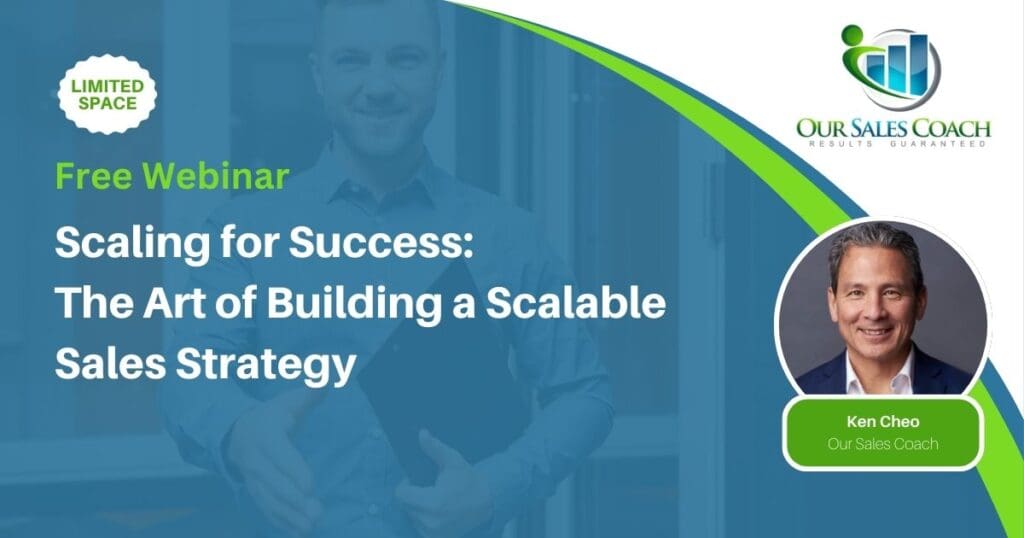Negotiation is a means to an end, closing the sale. It’s the pivotal moment where deals are won or lost, and profits are maximized or minimized.
Here’s how you can become a master of effective sales negotiation:
1️ – Preparation is your secret weapon. Any time you offer a proposal, either verbal or written, there is a risk you’ll end up in a negotiation. Being prepared for a negotiation includes understanding the impact to the person you are dealing with and their company if they do not buy your product or service. You also want to have thought through what your best-case scenario would be, the worst-case, your expected case, and in which case do you walk away.
2️ – Listen actively and empathetically. Truly understanding the needs and concerns of your prospect allows you to position your solution as the perfect fit. Seek to uncover their underlying motivations and objectives, and tailor your negotiation strategy accordingly. Being able to anticipate and identify potential objections before they come out gives you the opportunity to discuss them before you get the objection.
3 – Aim for a win-win outcome. Successful negotiations result in both parties feeling satisfied and gaining value. It doesn’t need to be ‘someone wins, and someone loses’. Look for creative solutions that address the interests of all stakeholders involved, fostering long-term partnerships and rapport.
4️ – Know your value and communicate it effectively! Highlight the unique benefits and competitive advantages your product or service brings to the table. Articulate your value proposition with clarity and conviction, emphasizing how it directly addresses your prospect’s pain points.
5️ – Stay flexible and adaptable. Negotiations can be fluid, and circumstances can change. Be willing to adjust your approach, explore alternative options, and find common ground that drives the deal forward.
6️ – Don’t fear silence. Embrace moments of silence during negotiations. It can actually be a powerful tool to gather your thoughts, create anticipation, and encourage your counterpart to fill the void with concessions or additional information.
7️ – Negotiate from a position of strength. The greater the pain, the less likely prospects will feel the need to negotiate. The fewer alternatives, the less leverage they will have to negotiate, reducing the need for you to negotiate. Prioritize building strong relationships and demonstrating your expertise throughout the sales process. The stronger your credibility and trust, the greater your influence during negotiations.
8️ – Seek win-win demands and concessions. You want to understand what they may be willing to concede that would have value to you and be easy for them to give up and what you can offer that would have value to them and be easy for you to give up. Making unilateral concessions can rob them of the feeling they are getting a good deal. Can you offer concessions that hold value to your prospect while also protecting your own interests? By being strategic with concessions, you can achieve mutually beneficial outcomes.
9️ – Maintain a positive mindset. Negotiations can be intense and challenging, but staying positive and maintaining a solution-oriented mindset is key. Approach negotiations as opportunities for collaboration and problem-solving, rather than as adversarial battles.
10 – Learn from each negotiation. Reflect on your negotiation experiences, identifying areas for improvement and growth. Continuously refine your skills, leverage feedback, and adapt your approach to become an even more effective negotiator.
Mastering effective sales negotiation is a journey!
Embrace the process, continuously refine your skills, and watch as your success in closing deals soars to new heights!
Does Emotional Intelligence Have a Role in Sales Success?
Have you ever wondered if Emotional Intelligence (EI) has a role in sales success?
The answer is a resounding YES! Let’s delve into why EI is crucial for sales professionals:
Sales is not just about numbers and products; it’s about building authentic connections with people. EI allows sales professionals to understand and empathize with their prospects’ emotions, fostering trust and creating genuine relationships. People buy based on emotion and justify it logically. By recognizing and responding to their needs and aspirations, you can establish stronger connections, increasing the likelihood of successful sales outcomes.
Effective communication is the cornerstone of sales, and EI enhances your ability to express yourself clearly and empathetically. It enables you to adapt your communication style to resonate with different personalities and emotional states, ensuring your message is received positively.
Understanding your customers’ needs at a deeper level is a game-changer, and EI helps you read between the lines. By grasping the underlying emotions and motivations driving their buying decisions, you can align your offerings with their desires, leading to more impactful solutions.
Sales can be a challenging journey, commonly with many rejections along the way. However, EI equips you with the resilience to handle them gracefully. It allows you to regulate your emotions, bounce back from setbacks, and maintain a positive mindset. By learning from rejections and persistently pursuing new opportunities, you can achieve greater sales success.
You’ll know by now that in sales, adaptability is key. EI enables you to navigate changes in the market, adjust your strategies, and stay ahead of the curve. By understanding the emotional landscape and responding appropriately, you can seize emerging opportunities and thrive in a competitive environment.
Emotional intelligence goes beyond the individual level—it also extends to the team and leadership. A sales team led by individuals with high EI benefits from enhanced collaboration, effective conflict resolution, and a positive team culture. EI-driven leaders inspire and motivate their team members, creating a high-performing sales force.
Emotional intelligence will always play a pivotal role in sales success.
By harnessing it, you can build authentic connections, communicate effectively, understand customer needs, handle rejections with resilience, adapt to changing circumstances, and cultivate a positive team culture.
Invest in developing your EI skills and I promise you won’t regret it.
Sales Techniques for Overcoming Common Objections
Stalls and objections can occur at every stage of the sales process. Being able to recognize them as they occur and knowing how to handle these situations can make the difference between moving forward, stalling, or letting the opportunity die.
With the right techniques, you can navigate objections and turn them into victories.
Let’s explore some effective sales strategies for overcoming common objections:
Active Listening and Empathy: Objections can trigger a fight or flight response from salespeople. Neither will help you overcome the situation. The first step in handling any stall or objection is to acknowledge their objection. Those few seconds will give you the time you need to evaluate what you are dealing with and how best to respond instead of letting your emotions cause a knee-jerk reaction. Instead, you show genuine empathy and understanding by acknowledging their perspective. This not only builds rapport but also allows you to address their specific needs and fears.
Address Objections Head-On: Avoiding objections and hoping your stellar presentation will make them go away is a low probability strategy. Confront them directly. Anticipate common objections and proactively address them during your sales process with well-thought-out responses. You can alleviate their concerns before they become roadblocks.
Provide Compelling Solutions: Objections often arise when prospects don’t see the value or benefit in your offering. Present your solution as a compelling answer to their challenges or pain points. Highlight the unique features, benefits, and outcomes they can expect, showcasing how your product or service can truly make a difference.
Build Trust with Social Proof: Overcome objections related to trust or credibility by leveraging social proof. Share success stories, testimonials, or case studies from satisfied customers who have achieved positive results. This provides evidence of your track record and builds trust in your prospect’s mind.
Ask Thought-Provoking Questions: Instead of trying to convince your prospect, engage them in a conversation. Stalls and objections can often be knee-jerk reactions or brush-offs and not real objections. Ask insightful questions that help them discover the underlying motivations behind their objections. This allows you to address their concerns more effectively and tailor your approach to their specific needs.
Offer a Trial or Guarantee: To alleviate concerns about risk or uncertainty, consider offering a trial period or a satisfaction guarantee. This demonstrates your confidence in your product or service and gives them the reassurance they need to move forward.
Set a Follow-Up Agenda: If you are dealing with a real objection, find out what needs to happen for them to be ready to change and when. This will empower you with the reasons and timeline to follow up without wasting time chasing them.
With these powerful sales techniques in your arsenal, you’ll be well-equipped to overcome objections and achieve sales success.
The Impact of Customer Experience on Sales and Retention
In today’s increasingly competitive marketplace, customer experience has become a game-changer.
It has a profound impact on both sales and customer retention.
Here’s why:
When customers have a positive experience with your brand, they are more likely to be satisfied and happy. This satisfaction leads to increased customer loyalty and advocacy. Loyal customers not only make repeat purchases but also become advocates, recommending your products or services to others.
Moreover, a great customer experience sets you apart from the competition. It creates a strong emotional connection with your customers, making them more likely to choose your brand over others. This emotional bond builds trust and loyalty, resulting in higher sales and customer retention rates at higher profit margins.
Investing in customer experience pays off in the long run. By providing exceptional service, personalized interactions, and seamless experiences, you create a positive brand image and reputation. This attracts new customers and encourages existing customers to stay loyal and recommend you to others, boosting sales and ensuring long-term success.
Remember, every interaction with a customer is an opportunity to create a memorable experience. Prioritizing customer experience not only drives sales but also cultivates customer loyalty, ultimately leading to business growth and success.
Building a High-Performing Sales Team – 3 Things To Remember
Building a high performing sales team requires a salesforce design process that provides for clearly defined positions.
Step 1 is your sales strategy and includes customer segmentation, product and service offerings for each customer segment and the sales process that defines the activities to ensure success.
Step 2 is the go-to market strategy with sales and marketing channels selected.
Step 3 is the sales force design including the structure and size. The structure defines the roles, degree of specialization, reporting relationships and control and coordination. Combined with the sizing, you can assign responsibilities for customers, products, and activities.
Now you can seek out individuals who possess the right skills, experience, and cultural fit for the gaps you need to fill. Do you need strong communicators who can build relationships with clients, adaptable individuals who can navigate various sales situations, or resilient salespeople who can prospect and handle rejection with determination.
Prioritize ongoing training and development to ensure your sales team is equipped with the latest techniques, product knowledge, and industry insights. Invest in programs that offer coaching, mentorship, and learning opportunities. By continuously enhancing their skills and motivation, your team will stay ahead of the curve and aligned with your business goals.
Create a collaborative culture within your sales team. Encourage teamwork, the sharing of best practices, and support among team members. Promote an environment of healthy competition that inspires growth and camaraderie. By fostering collaboration, you cultivate a synergistic sales team where knowledge and ideas flow freely, leading to improved performance and collective success.
If you consider these factors and take deliberate actions, you can build a high-performing sales team that drives business growth, achieves sales success, and exceeds customer expectations.
Understanding and Influencing Buyer Behavior in Saas
Understanding and influencing buyer behavior in the SaaS industry is essential for sales success. Here are some key considerations to keep in mind:
Know Your Buyers: Gain a deep understanding of your target audience by creating detailed buyer profiles. Identify their pain points, motivations, and decision-making processes. This knowledge will enable you to tailor your sales strategies and messages to resonate with their specific needs.
Map the Customer Journey: Visualize the customer journey to identify touchpoints and interactions that impact buyer behavior. Recognize the stages of awareness, consideration, and decision-making. By aligning your sales efforts with each stage, you can deliver the right information and value at the right time.
Showcase Value: Clearly communicate the unique value proposition of your SaaS solution. Highlight how it solves critical challenges, delivers tangible benefits, and addresses specific pain points. Customizing your messaging to address individual buyer needs will make your offering more compelling and attractive.
Build Relationships: Focus on building strong relationships with potential buyers. Foster trust by demonstrating expertise, actively listening to their needs, and providing personalized solutions. Establishing genuine connections based on trust and understanding will differentiate you from competitors and increase buyer loyalty.
Leverage Social Proof: Utilize social proof, such as customer testimonials, success stories, and industry accolades, to influence buyer behavior. Showcase real-life examples of how your SaaS solution has delivered value and helped customers achieve their goals. Social proof enhances credibility and builds confidence in your offering.
If you follow these tactics, you can tailor your sales approach, build meaningful relationships, and position your SaaS solution as the preferred choice for potential buyers.







